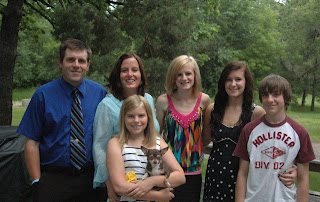While doing this class during the summer, I had difficulties. I had my twins graduate from high school and had to have a graduation party. We also found out my 12 year old son has a heart murmur but to find out, it is the "good" heart murmur called Still's Heart Murmur. My son just has a musical heart. He also had a severe ear infection and we were in the Emergency Room for five hours.
My youngest daughter and I got to be in our local parade to support the school referendum we are trying to get passed in August to build new schools.
With a family like this:
You can see how busy it can get.
One of the best things I got to do with my kids was doing my homework with them. With the mind maps, I got to interact with my children and ask them how it looked, where I should move things, what I should add. I love being able to interact my homework with my children. It may not be to my satisfaction but it is part of their work so I would not change it for the world. I would also ask my son, who is going into 7th grade, if he remembered doing any of the math I was doing.
One of the best things about doing my homework is being able to experiment on my children and with my children.









